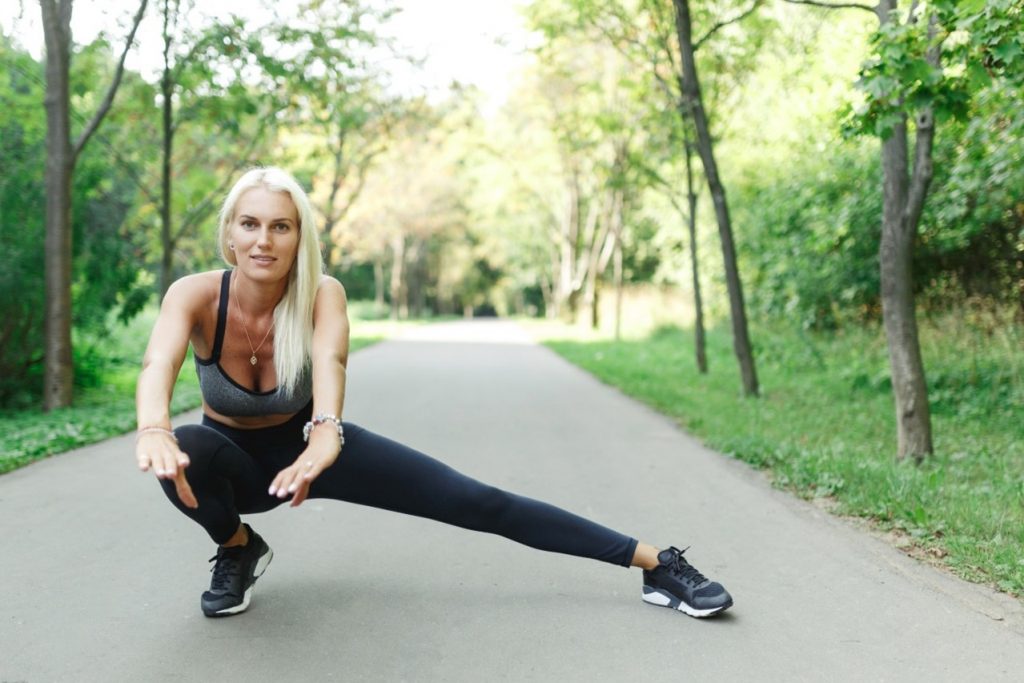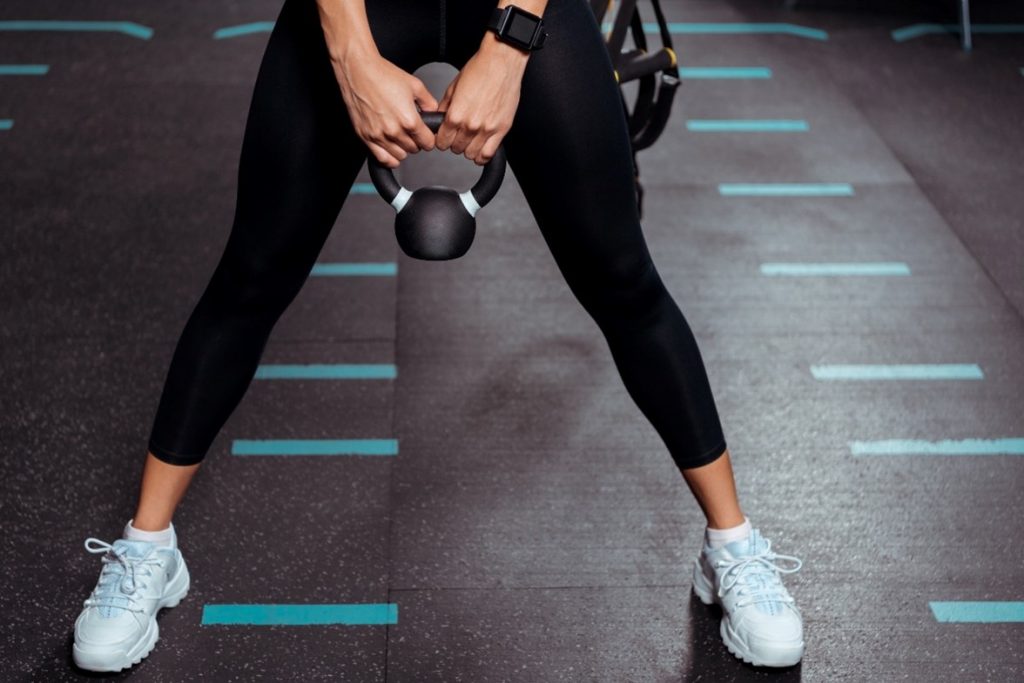Danielle Kesich Di Bari is a fitness enthusiast, who, through her dedication to functional fitness, has unlocked a path to strength, confidence, and transformation for women of all backgrounds. In the following article, Danielle Kesich delves into this empowering journey, exploring how functional fitness transcends physicality to foster inner strength and self-assuredness, ultimately reshaping lives in the process.
In a world where women continually break barriers and challenge stereotypes, the journey to empowerment takes many forms. One particularly empowering path is through functional fitness, a dynamic approach that transcends mere exercise. Functional fitness is a journey that emphasizes capabilities over appearance, challenges preconceived limitations, and equips women with the tools to conquer life’s challenges with vigor.
Below, Danielle Kesich Di Bari discusses the distinction it holds over traditional strength training, and the key exercises and strategies that enable women to harness their full potential.
Danielle Kesich Di Bari Explains Functional Fitness
Functional fitness is a holistic training approach designed to improve the body’s ability to perform everyday activities with ease and confidence. For women, it can be a game-changer. By engaging multiple muscle groups and incorporating movements that mimic real-life activities, functional fitness prepares women to handle daily challenges and break free from the limitations they may have perceived.
As women become more capable in their daily lives and physical endeavors, functional fitness naturally bolsters self-confidence. This newfound confidence is not solely rooted in physical appearance but is deeply ingrained in the belief that they are strong, capable, and ready to take on challenges. This boost in self-confidence extends to all aspects of life, leading to a more empowered and self-assured individual.
Functional vs. Traditional Strength Training
While traditional strength training focuses on isolating specific muscle groups and lifting heavy weights, functional fitness is all about real-life movements and muscle group integration. Danielle Kesich Di Bari says that the main objectives of functional training are to enhance movement patterns, maximize movement efficiency, and strengthen major muscle groups, resulting in a comprehensive and effective workout.
On the other hand, traditional strength training mainly aims at muscle mass and strength building by focusing on specific muscles through isolated exercises. Although both functional and traditional strength training contributes to physical and mental health improvements, functional training offers a more holistic approach, ensuring that you’re not only building strength but also improving your overall functionality and performance in everyday life.
Types of Functional Training
Danielle Kesich says that to achieve optimal results from any functional fitness routine, it’s important to explore a variety of exercises that target different muscle groups and movements. Some excellent examples of functional training exercises include:
Push-ups
Push-ups are a fantastic functional fitness exercise that targets multiple muscle groups in the upper body, including your chest, arms, and core. Mastering the correct form and gradually progressing to more advanced variations can help build confidence and strength.
Walking Lunges
Danielle Kesich Di Bari explains that walking lunges are another fantastic functional fitness exercise that can help you reach your fitness goals. Performing walking lunges with the right form can:
- Enhance your range of motion
- Fortify your lower body muscles
- Engage your core
- Promote functional movement patterns
Danielle Kesich also explains that this versatile exercise not only contributes to improved physical health but also empowers you to feel strong and confident in your daily life, offering numerous benefits.
Jump Squats
Jump squats are an explosive functional fitness exercise that can help you build power and enhance your cardiovascular fitness. Practicing the correct form and integrating this dynamic exercise into your workout routine can reward you with increased strength, improved agility, and efficient weight management.
Jump squats are a fun and challenging way to elevate your fitness level and unlock your full potential.
 Bodyweight Squats
Bodyweight Squats
Bodyweight squats are a fundamental exercise for building lower body strength and functional movement. They target the quadriceps, hamstrings, glutes, and lower back, promoting better mobility and stability.
Dumbbell Rows
Dumbbell rows are an effective functional fitness exercise that targets your upper back and core muscles, helping to strengthen and tone these often-neglected areas. Practicing the correct form and technique can help you develop a toned, strong upper body and enhance your posture and overall functionality.
Full-Body Movements
Danielle Kesich Di Bari notes that full-body movements, like kettlebell swings, deadlifts, and snatches, engage multiple muscle groups simultaneously. These exercises improve coordination, cardiovascular fitness, and overall functional strength, making them essential for functional training.
Balance and Stability Exercises
Danielle Kesich also notes that these exercises improve balance and core stability, contributing to better overall functional fitness. Examples include single-leg balance exercises, stability ball work, and BOSU ball exercises.
How Women Can Get the Most Out of Functional Training
For women looking to get the most out of functional training, there are several key strategies and considerations to keep in mind.
Combine it with Other Exercises
Combining functional training with cardiovascular exercise and other activities can help ensure a well-rounded fitness routine that targets various aspects of your physical health. Incorporating a mix of exercises into your workout regimen offers various challenges to your body and maintains a balanced approach to fitness.
This not only helps improve your overall fitness level through aerobic exercise but also keeps your workouts engaging and enjoyable, making it easier to stay motivated and committed to your fitness goals.
Set Realistic Goals
Danielle Kesich Di Bari explains that setting clear and achievable fitness goals is crucial for motivation and tracking progress. Identify what you want to accomplish through functional training, whether it’s improved strength, better mobility, weight management, or enhanced confidence. Break these goals down into smaller, attainable milestones.
Creating a Supportive Environment
A supportive environment is key to fostering a sense of community and encouragement in your fitness journey. Surround yourself with knowledgeable trainers, safe and well-equipped facilities, and a positive atmosphere that promotes growth and progress.
Creating a supportive environment fosters a sense of empowerment and inspiration, encouraging you to achieve your fitness goals and lead a more active, healthier life.
Prioritizing Rest and Recovery
Rest and recovery are often underestimated but are essential components of a successful training program. Overtraining can lead to burnout and injury. Make sure to give your body the time it needs to repair and strengthen. Aim for adequate sleep, proper nutrition, and active recovery techniques like stretching or yoga.
Benefits of Functional Fitness
Functional fitness offers a wide array of benefits, extending far beyond just physical strength. Here’s a closer look at the advantages of functional fitness for women:
 Increased Strength
Increased Strength
It focuses on enhancing overall strength, not just in isolated muscle groups but in a way that improves functional movement patterns. Women who engage in functional training will find themselves better equipped to tackle everyday tasks with ease. This increased strength contributes to greater physical capability and a more resilient body.
Efficient Weight Management
Danielle Kesich says that efficient weight management is an important aspect of leading a healthy lifestyle and maintaining a healthy body composition. Incorporating functional fitness exercises into your workout routine aids in efficient weight management and overall health improvement.
Enhanced Overall Health
Functional fitness contributes to enhanced overall health, leading to a better quality of life and reduced risk of chronic diseases. Engaging in functional fitness activities allows women to enjoy the benefits of improved functional capacity, muscle performance, and overall health.
It is an excellent way to promote a healthy lifestyle and well-being, empowering women to take control of their health and fitness journey.
Boosting Self-Confidence
Boosting self-confidence is one of the most empowering aspects of functional fitness for women. Engaging in functional fitness exercises and achieving personal fitness goals helps women to build confidence, boost self-esteem, and foster a sense of strength and capability in all aspects of life.
Danielle Kesich Di Bari reports that the power of self-confidence extends beyond the gym, empowering women to conquer challenges and embrace their strength in every area of their lives.
Summary
In conclusion, empowering women through functional fitness is not just about building physical strength; it’s about cultivating a mindset of confidence and capability. By embracing this approach, women can break free from stereotypes, achieve increased strength, manage their weight effectively, and enjoy enhanced overall health. Most importantly, functional fitness can empower women to feel more confident in their abilities, both inside and outside the gym. So, ladies, it’s time to unlock your strength and confidence through the power of functional fitness!








